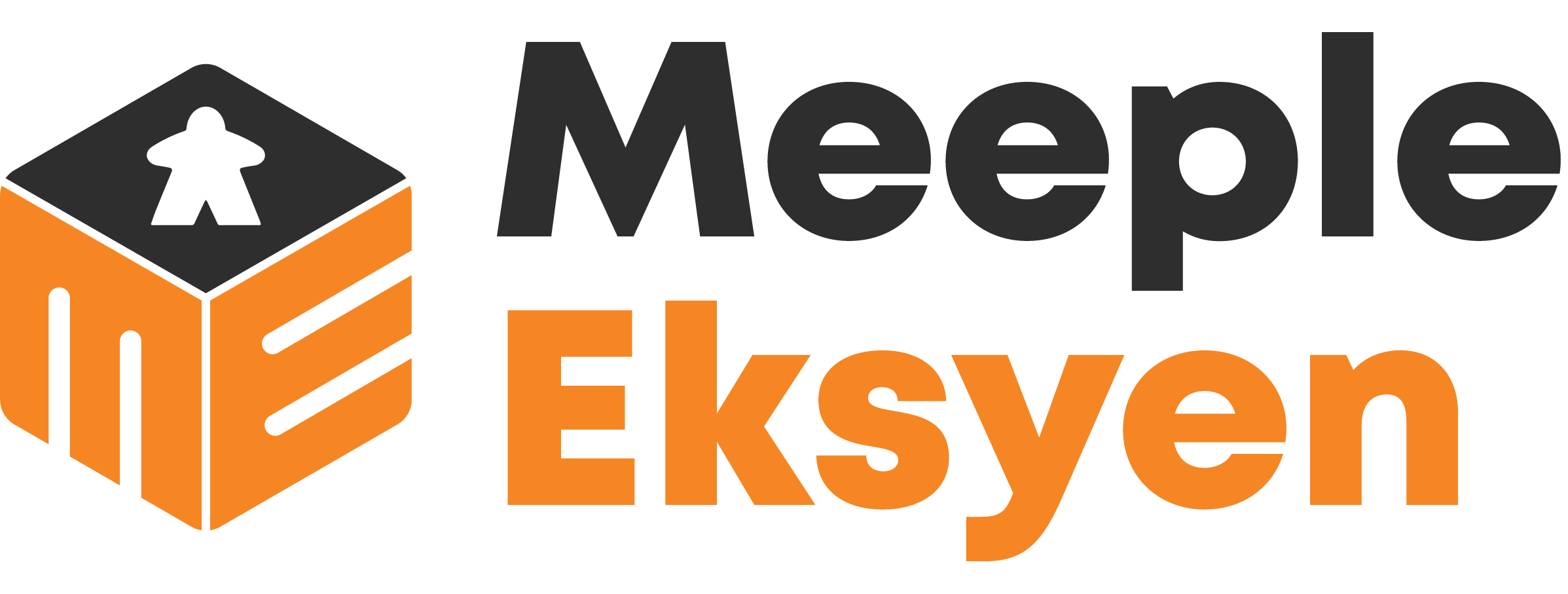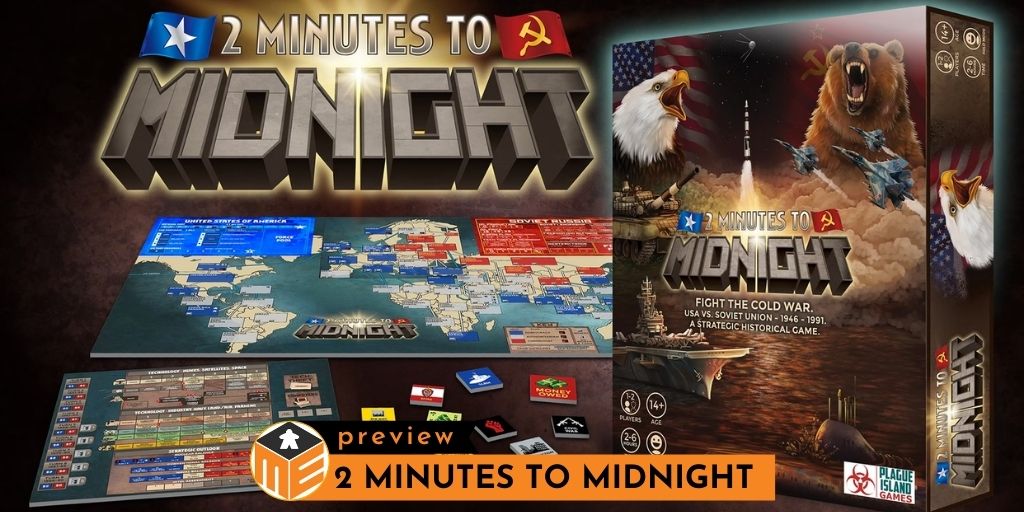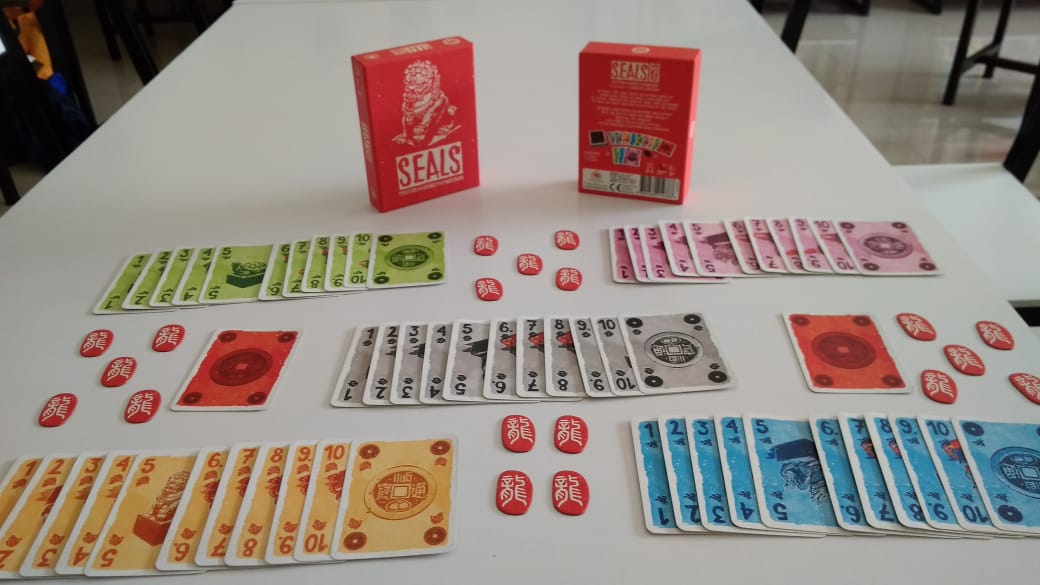To prevent confusion, I think it is necessary to mention beforehand that we are not talking about the second sequel of The Manhattan Project — this 2 Minutes to Midnight does not relate to the aforementioned game at all. And now it has been cleared, both games take place in the arm race of two superpowers during the Cold War.
The game shares a similar title to a song from the band Iron Maiden — a protest against the nuclear war. It embodies how close we are and a man-made global catastrophe. Tinkering with this historical background, Stuart Tonge and Plague Island Games developed a simulation of this geopolitical tension.
With a lot to cover from the rule and considering the complexity, I will skip the how to play 2 Minutes to Midnight in this writing. However, you can always consult to their Kickstarter project page.
A short disclaimer before you read my board game analysis
As an avid euro gamer and hardcore Legend of the Five Rings (L5R) LCG player, my reviews may reflect a preference for these styles, and I may not cover solo games/variants extensively. Please note that my personal remarks are based on my gaming experiences, and I aim to provide honest insights within the scope of my preferences.
Disclaimer: We had the preview copy for this review, and it was not the final version. There might be possible changes and alteration from the publisher regarding the components, printing and build quality, rules and concepts in the official released product.
First impressions — Components, rulebooks, etc.
Well, 2 Minutes to Midnight is not the only war game simulation that romanticizes the Cold War. It was not hard to associate such a game with Twilight Struggle from GMT Games. Nevertheless, I will not make any comparison between both games, as I have never tried the other one.
I would say the table presence is exceeding adequate to make people notice what you’re playing. It comes with a huge ‘if’, though: if your worktop provides adequate spaces for this little monster. And yes, people would at least take a peak at the giant world atlas, if you are playing on the table.
The rulebook is really comprehensive and going well through the details. There are some flavour texts and comments with some facts related to the background story. It’s equipped with examples and detailed explanations, and that’s expected from a game with this degree of complexity. However, it also becomes the downside for new and casual players, particularly. There is a steep learning curve to grasp the whole things. But when we reach the top of that curve, it becomes satisfying.
Gameplay
To put it simply, 2 Minutes to Midnight is practically a game with an asymmetric play. Each superpower side has own methods to win the game. The Soviet bloc, for example, relies heavily on espionage and military action. Meanwhile, the US may approach the board through investments to make the situation more favourable.
Honestly, this wargame is more straightforward than I expected. Players have to go through the actions and events printed on the cards they draw from the deck. I explain this more below later on.
Although it sounds simple, what’s happening on 2 Minutes to Midnight does not really rely on the cards only. Some cards will drive players to freely make decisions and actions to change the situation on the board. These actions become the core attraction of the game.
The simplicity to play the game comes with the complex matrices of decision-making progress. We are trying to pull the string in a global scale. That means the decision in the previous turn may be impactful in the upcoming turns, be it fruitful or impedance later on.
The mechanics in 2 Minutes to Midnight
Once again, drawing a card from the deck is the main drive in 2 Minutes to Midnight. These cards are the replacement (if not a better option) for a system called chit-pull. This system is commonly utilized in a war game to simulate the battlefield’s simultaneous actions. Instead of using the chits, Stuart uses cards in the hope to have more space — which is a better medium at describing the situations and actions.
Because the game takes place in the real historical events, most of the history aficionados (who happened to be one of the main market) can expect most of the things that will happen at some points during the game. Stuart understands this aspect, and thus implemented the card deck to randomize the point when these events happen during the game.
Therefore, the story is not too linear, and it prevents the game becoming too easy to anticipate. It is a nice surprise factor that spices up the whole experience. The campaign stays true to the history, but the outcome can be different — this is a good thing to have because as we know, 2 Minutes to Midnight needs to stay as a simulation (where some what-ifs can be reproduced).
‘Chit’ pulling through card aside, the game also involves dice rolling, usually to determine what happens on the board in a random order. Despite the randomizers in this game, 2 Minutes to Midnight is far from the definition of a luck-oriented game. Players need to consider some long-term (dis)advantages whenever they decide which actions they want to take.
Obviously, the dice and the event-driven mechanic compliment this aspect of planning strategies; which gives a new tactical territory to explore along the campaign.
Unrest — Unrest everywhere!
I think this aspect is what I love the most in this game: unrest. It is a thing we have to prevent in the countries we control (the ones aligned with our superpower side) and to instigate in our opponents’ area. This unrest mechanic depicts the geopolitical and economy situation during the Cold War, and it makes the game more realistic.
Recently converting to a contrasting political ideology? Unrest. Sending new military aggression in a warring state? Unrest. Reforming your Mother Russia towards freedom? Unrest. How to stabilize the country again, then?
For starters, it is necessary to make the people happy. Through investment (which means money), we can disperse the unrest in our region. The Soviet has its own way to suppress it, though: the military action.
On the other side, military action (initiated by the western bloc) can be the reason unrest blooms in the US. The free people dislike the notion to have a war (after the World War II, they understood the devastating impact of a war).
The untreated unrest may end up with a coup. This is the reason preventing (and initiating) the unrest in a region is essential throughout the game. A coup may change the ideology and side in that specific country. This aspect is closely related to the other parts of the game: investment, spies, etc.
verdict
The 2 Minutes to Midnight has done a good job to depict the Cold War. It represents not only the real historical events, but also adequately gives us some space to simulate some what-ifs, too. Through the unrest aspect, my opponent and I could catch the political tension during that time — how frail the world was in the past (and is currently).
It is a nice two-player game to have in your arsenal. With some scenarios, you can pick which one fits your preferred game and time frame (a scenario may take longer than the others).
I am a full-time food technologist during weekdays. However, when the calendar hits weekends, I transform into an avid board gamer. I am a hardcore Legend of the Five Rings (L5R) LCG player from Fantasy Flight Games (FFG). Current hobby: buying board games. My shelf of shame’s list is getting longer, thanks to you, Kickstarter.





